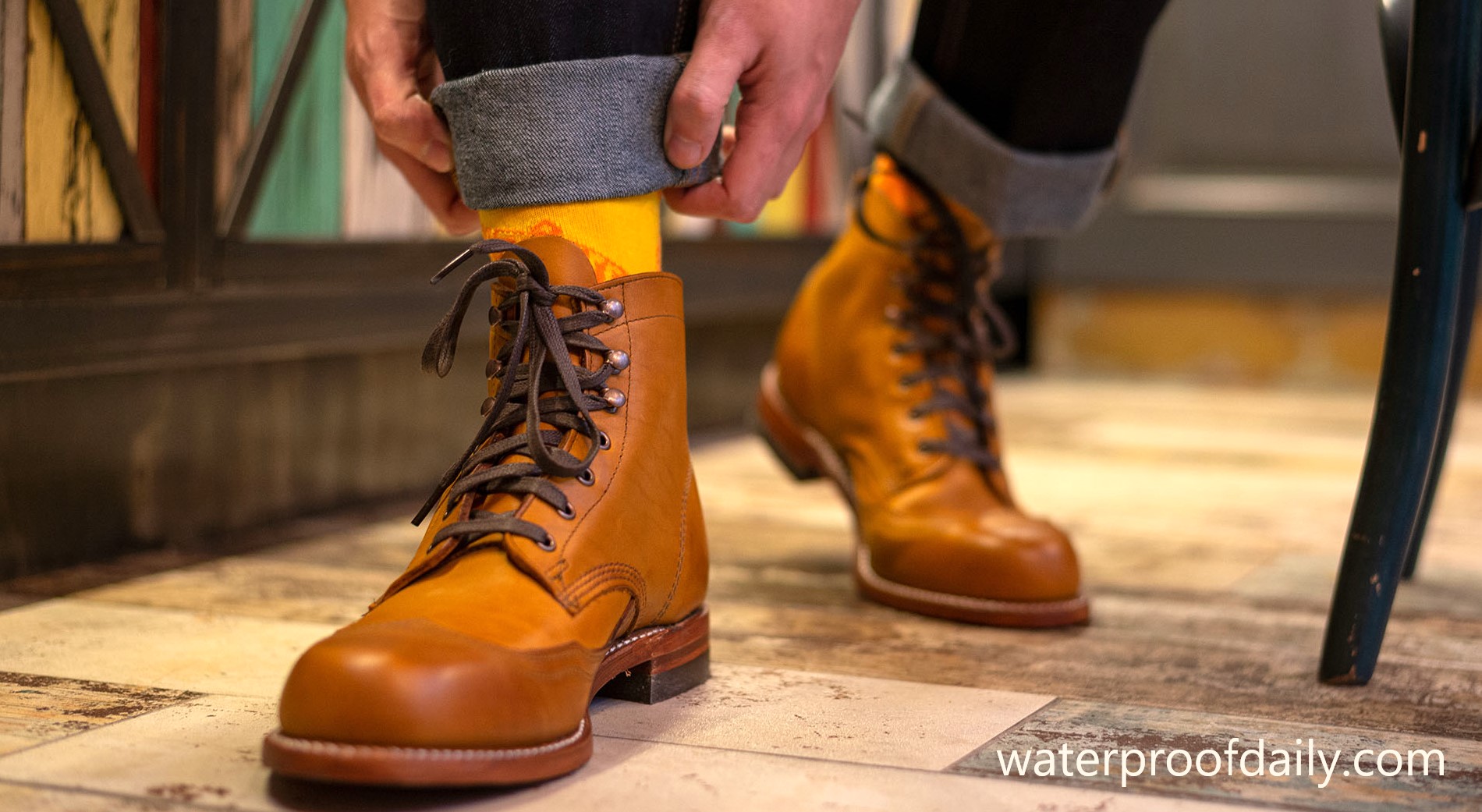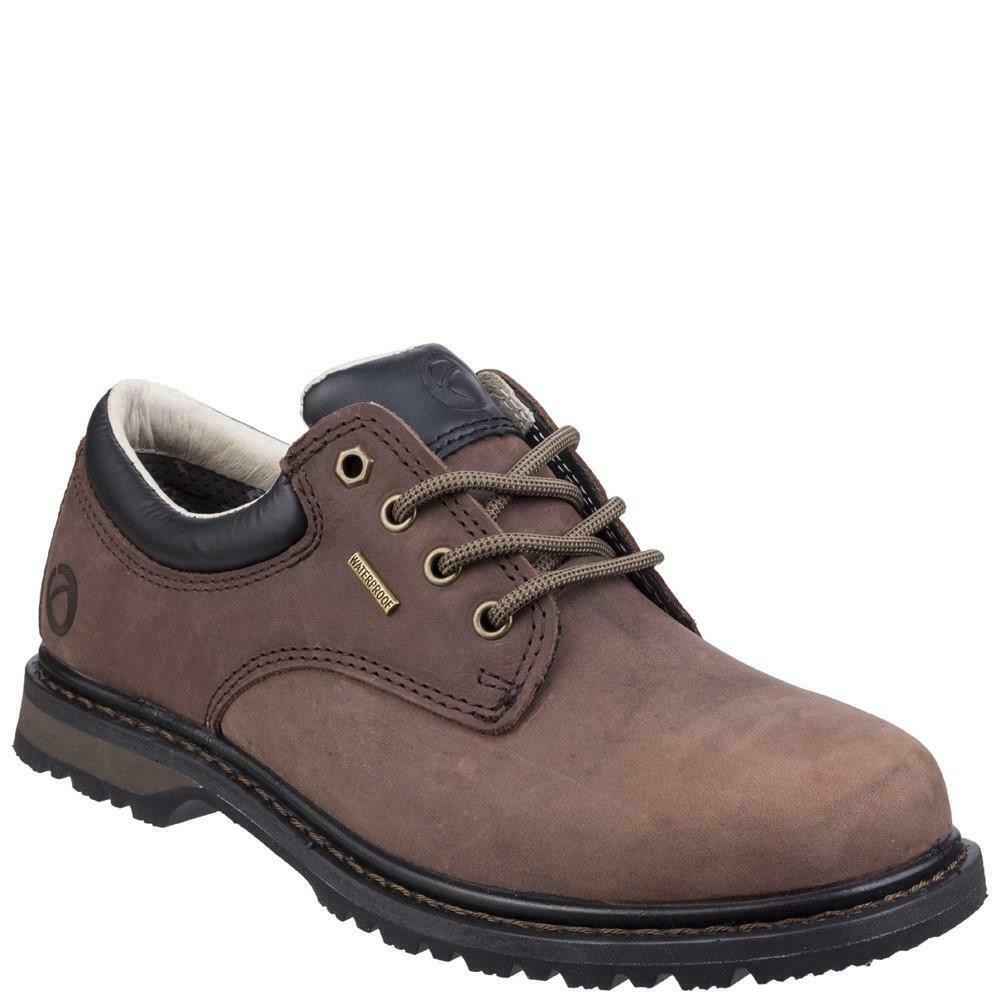

First, the leather must be cleaned and dampened for the conditioner to do its job. Leathering ConditioningĬonditioning your leather is easy and can be done with just a few items. While wax is great for monthly application, don't forget to take time to condition your leather to extend its lifespan. As your leather goods age, they will appear more and more dried out without the use of conditioner. While wax acts as a protective layer, conditioner is what will keep your leather from cracking. Note that waxing is different than conditioning. After an hour, buff off any excess wax to get that fantastic leather shine. Once you've done this, place the leather in a cool area to naturally dry. It must be spread as evenly as possible all around the leather. Warm it up by rubbing the cloth together and then spread it on the leather in small areas. Then, place a small amount of wax onto a dry cloth.
WATERROOF LEATHER SHOES FREE
Wax must be able to penetrate the material, so it must be free of dirt and dried-on stains. Leather WaxingĪpplying leather wax is quick, easy, and effective so long as you follow the proper steps. Below are the step-by-step directions for each of these methods. With its fibers, suede can be destroyed with wax. However, wax cannot be used on all types of genuine leather. Popular waxes, likes those from Nikwax, are very easy to apply and will keep your leather protected from moisture. You may choose to either condition or wax your leather. Unless you have faux leather, water-resistance treatments will be necessary to protect your genuine leather goods.
WATERROOF LEATHER SHOES FULL
Wax and conditioner may be used on Full and Top Grain leathers. It patinas beautifully, has superior durability, and overall is the type of leather most want in top-of-the-line leather goods. While Top Grain leather isn't truly top tier, Full-Grain is the best leather that you can buy.

They're more water-resistant than the above, but still aren't entirely waterproof. Full and Top Grain Leatherįull and Top Grain leathers are the toughest and highest quality of this group, as they're taken from the toughest parts of the hide. Should you need a higher degree of water protection, nubuck leather will need to be treated with a protectant spray, wax, or conditioner. It offers some water resistance, so walking in the rain or snow won't cause irreversible damage. Nubuck leather is a type of full-grain leather buffed down to feel like suede, but more durable.

Instead, use a spray conditioner that is oil-repellent and water-resistant. Leather wax absolutely cannot be used on suede, as it will ruin this delicate leather. If you have suede leather goods, they must constantly be conditioned and protected to preventing cracking, discoloration, and water damage. However, suede leather is extremely sensitive. It's rubbed to soften the fibers, producing the velvet-like texture we know and love. Suede LeatherĪs you likely know, suede is a soft type of leather made from the underside of the skin. For greater water resistance, it must be treated with a quality wax or conditioner. This type of leather is porous, so water and other liquid can cause damage. However, the quality of it is inferior to that of genuine leather. Synthetic leather is extremely common, as it's very cheap and light. Let's break down the different types of leather available to you and the best treatment methods for each. Your choice of leather will ultimately determine the resistance. Some types of leather are more water-resistant than others, and most leathers can be made more resistant with the right treatments. While your shoes or handbag will fare well while quickly stepping into the rain to get to your car, this isn't the same as submerging leather. Instead, think of leather as water-resistant. How will these items fare in inclement weather? Real leather is porous and because of that, it cannot be 100% waterproof. Say you've worn your new leather shoes or carried a leather handbag out and, despite the forecast, it begins to rain.


 0 kommentar(er)
0 kommentar(er)
